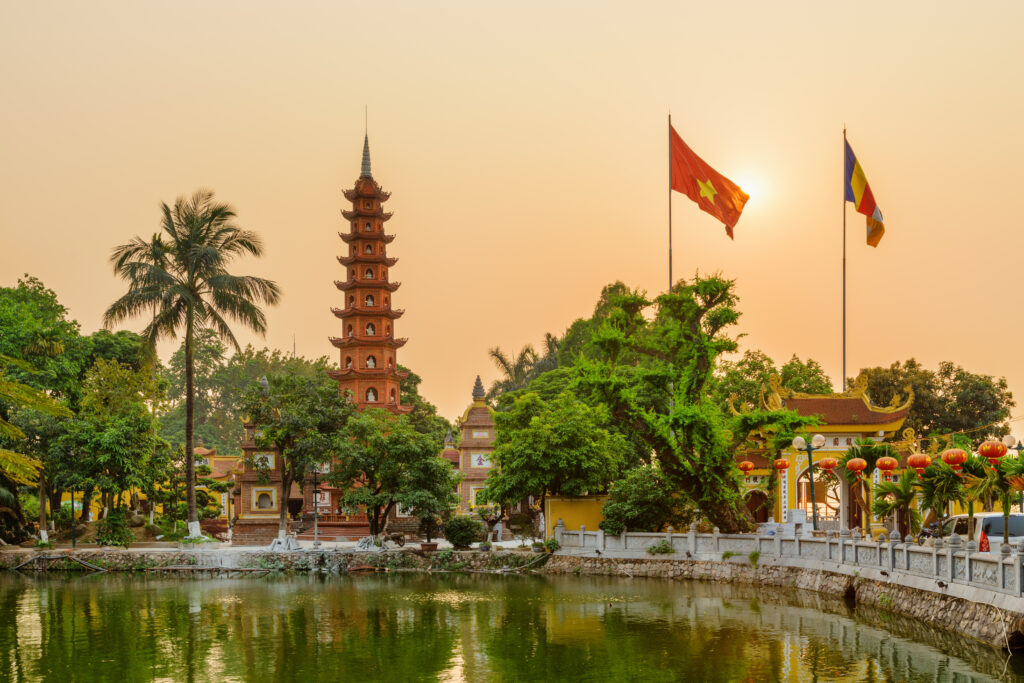
The capital of Vietnam, Hanoi is a singular city, the result of centuries of accumulation and multiple heritages that make up an urban mosaic unique in Asia: pagodas and the remains of the ancient citadel stand side by side with the Art Deco facades of colonial houses, the pediments of Soviet-inspired buildings and glass towers. The city also has a special relationship with nature: dozens of lakes dot the capital, linked by tree-shaded avenues that invite you to take a stroll. The provinces bordering the capital offer excursion opportunities to discover a rich historical and cultural heritage: temples, pagodas, craft villages and above all... Along Bay, an imaginary place that has captured the dreams of generations of writers and filmmakers.
In this article, we invite you to discover the 17 must-sees in Hanoi, for a complete and memorable experience of this fascinating city.
1. Discover the legend of Hoan Kiêm Lake

Located in Hanoi, Hoan Kiêm Lake is surrounded by a legend that dates back to the creation of the Lê dynasty. Lê Loi, a humble fisherman, made daily trips to the lake. One stormy evening, the genie of the lake, the Golden Turtle, appeared to him and offered him a sword, revealing that he had been chosen to liberate the people and fight the Middle Kingdom. After his victory in 1428, Lê Loi was crowned emperor under the name Lê Thai Tô, marking the beginning of the Lê dynasty. On another stormy night, as he stood alone on the shores of the lake that had transformed his destiny, a bolt of lightning tore through the sky, and the sword was torn from him, disappearing into the depths of the water. It is said that sometimes, under the moonlight, the sword's magical glint can be seen on the peaceful surface of the lake.
Cheap guided tour to book : we recommend that you book this guided tour of Hanoi that will take you to all the must-see places in Hanoi for... 1.95 per person!
Read more: 10 Asian capitals to discover
2. The Temple of Literature, a must-see in Hanoi
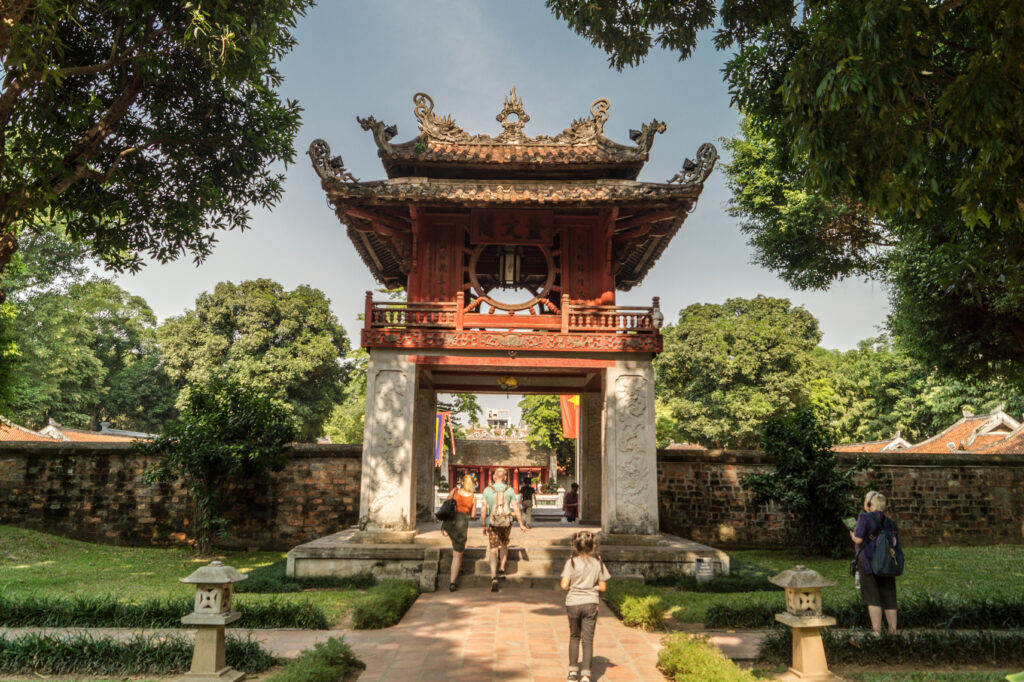
Dedicated to Confucius, the Temple of Literature was built in 1070 to train the emperor's future civil servants. Restored and rebuilt according to traditional methods, in 1075 it became home to the College of the Nation's Children, Quôc Tu Giam, under the leadership of Ly Nhan Tông, to educate the kingdom's future elite. The temple enclosure, measuring 350 by 70 meters, is divided into five courtyards. Today, access is either through the majestic central gates, which were intended for the king, or through the side gates, which were reserved for visitors. Indeed, from a Confucian perspective, the use of the side gates symbolized humility and patience, essential qualities for any candidate. The buildings, some completely rebuilt, are magnificent and make this place a must-visit in Hanoi.
To book: Discover with a local guide by booking this guided motorcycle tour of the city. You'll visit the Temple of Literature, have lunch in a local restaurant and much more.
Read more: What to do in Vietnam The 21 most beautiful places to visit
3. Visit the Vietnam Fine Arts Museum, a chronological and technical panorama of Vietnamese art
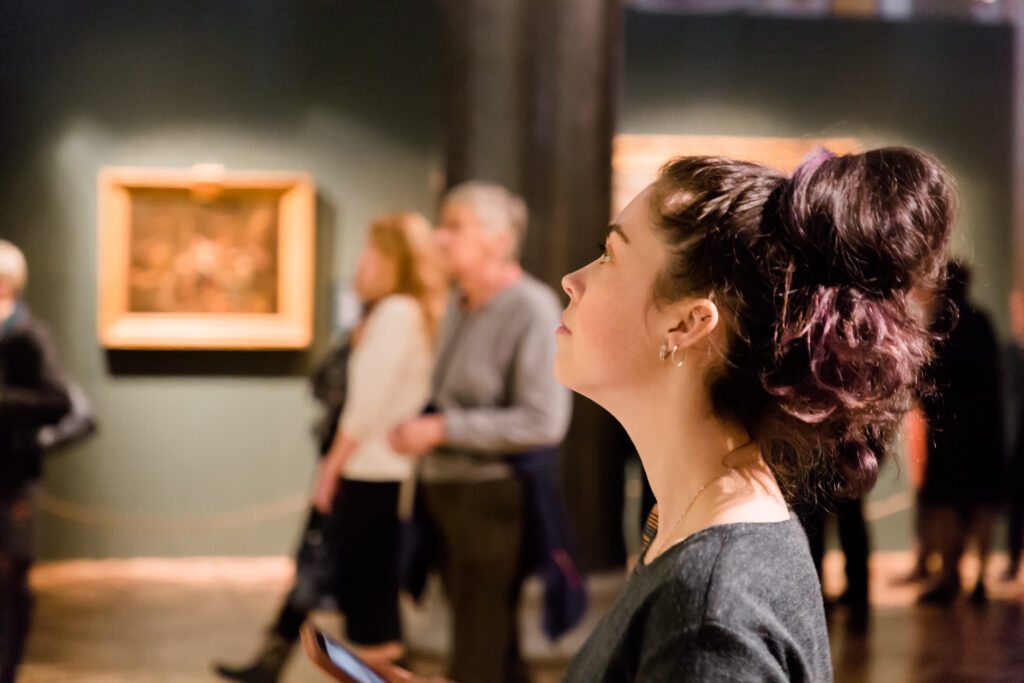
Located in the immediate vicinity of the Temple of Literature, the Vietnam Fine Arts Museum today houses a variety of works spanning a period from prehistory to the present day. Covering more than 4,700 m², the works on display offer a chronological and technical panorama of Vietnamese art, including ceramics, sculpture, lacquer, painting on silk and mulberry paper, as well as folk art. For prehistory, the museum presents human and animal figures discovered in the Dong Noi cave, dated 10,000 years ago and considered to be the first Vietnamese plastic work. The most popular room is devoted to the painters of the École supérieure des Beaux-Arts d'Indochine, which paved the way for a specifically Vietnamese style of modern art. Among the major works are the lacquers of Nguyen Gia Tri, the oil paintings of To Ngoc Van, the paintings and engravings of Tran Van Can and the works of Bui Xuân Phai (1921-1988), often compared to Toulouse-Lautrec for his depictions of the old streets of Hanoi.
Petit Futé tip: Take advantage of a discount by booking your travel insurancehere , and leave with peace of mind!
4. Discover the country's history at the National Museum of Vietnamese History
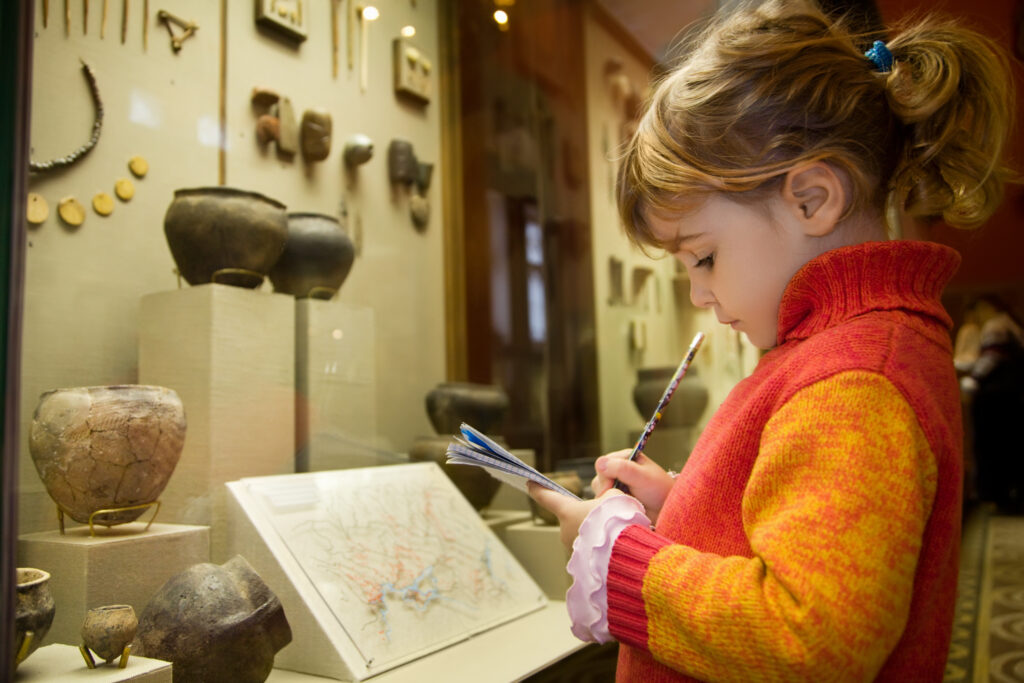
Since 1954, the National Museum of Vietnamese History has been dedicated to the history of Vietnam, from its prehistoric origins to the proclamation of the Democratic Republic of Vietnam in 1945. Among the most important exhibits are impressive bronze drums, testimony to the Dong Son culture. The museum also displays statues, reliefs and terracotta objects, some of which are among the oldest evidence of Champa (5th to 13th centuries). Less spectacular but essential for historians, several steles are on display, including the foundation stele of the Po Nagar Cham sanctuary in Nha Trang.
Worth knowing: another building (216, Tran Quang Khai or 25, Tong Dan) is devoted to modern history, from 1858 to the present day. It traces in detail the history of the anti-colonial struggle, its hidden phases, the origins of the heroes of the revolution, their studies, their lives..
5. The Vietnamese Women's Museum: a tribute to their role in family life and the country's history
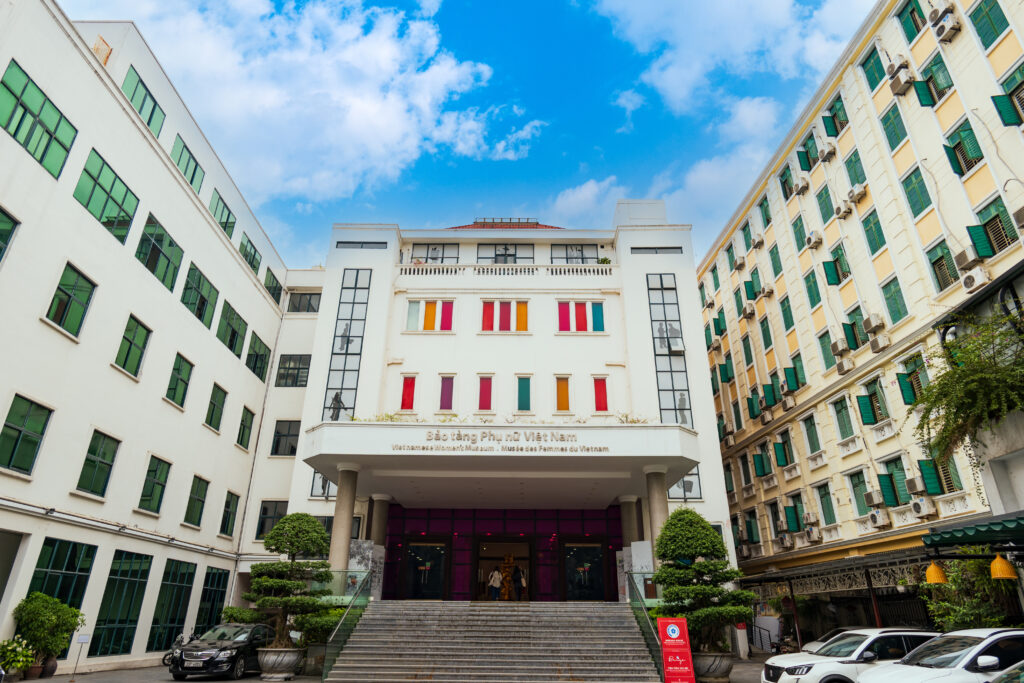
Located in the heart of the Central District, this museum is one of Asia's most attractive tourist attractions. It pays tribute to the role of Vietnamese women, both in family life and in the trials of the country's history. You'll discover a collection of over 1,000 objects and photos on three thematic levels. On the second floor, "Women in the Family" explores the specific characteristics of the Vietnamese family and the customs of different ethnic minorities, such as marriage, childbirth, daily life and handicrafts. On the second floor, "Women in History" is the most poignant theme, celebrating the heroism of women. The third floor is devoted to "women's fashions", offering a glimpse into the diversity of ethnic minority women's costumes, detailing techniques and skills specific to each group, such as batik or embroidery.
Good to know: A visit to the museum is a pleasant experience, thanks to a dynamic itinerary and a colorful, didactic scenography. French speakers will feel particularly at home with trilingual cartridges in Vietnamese, French and English, and an audioguide is even available.
To book: Explore Hanoi by booking this audio tour on a multi-stop bus. You hop on and off whenever you like on a route that takes you to the city's main attractions and monuments.
6. St. Joseph's Cathedral, a testament to the vitality of Vietnamese Catholicism
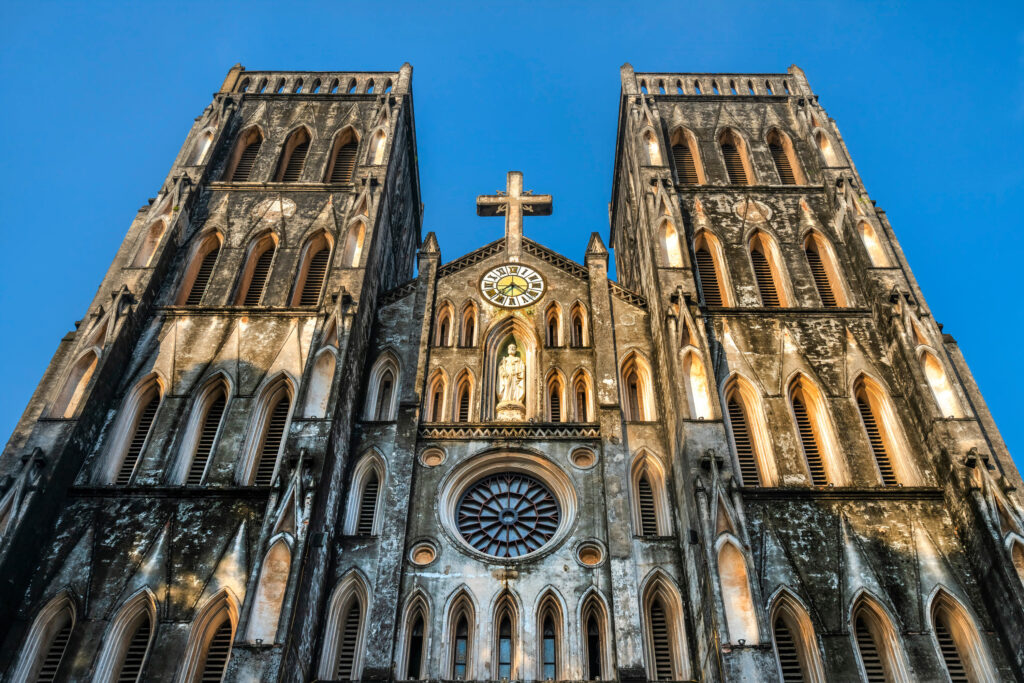
Built in 1886 by the French, St. Joseph's Cathedral still bears witness to the vitality of Vietnamese Catholicism. Dedicated to Saint Joseph, protector of the Tonkin vicariate, it was consecrated in a ceremony on Christmas Eve 1886. The chevet, facing west towards Christ's tomb, is today adorned witha triple stained-glass window celebrating the Virgin Mary. At its feet lies Théophane Vénard (1829-1861), a priest of the Missions étrangères de Paris, who entered Tonkin clandestinely in 1854, was captured and beheaded in 1861, and was canonized in 1988 by Pope John Paul II. The cathedral also perpetuates the memory of martyrs, such as Father André Tran An Dung Lac (1795-1839), a Vietnamese priest executed by beheading under the reign of Emperor Minh Mang, whose relics are housed in a chapel.
Worth knowing to appreciate the extraordinary vitality of Vietnamese Catholicism, we recommend visiting the cathedral on Sundays around 6.30pm.
7. Long Bièn Bridge, the "dragon that rides the Red River
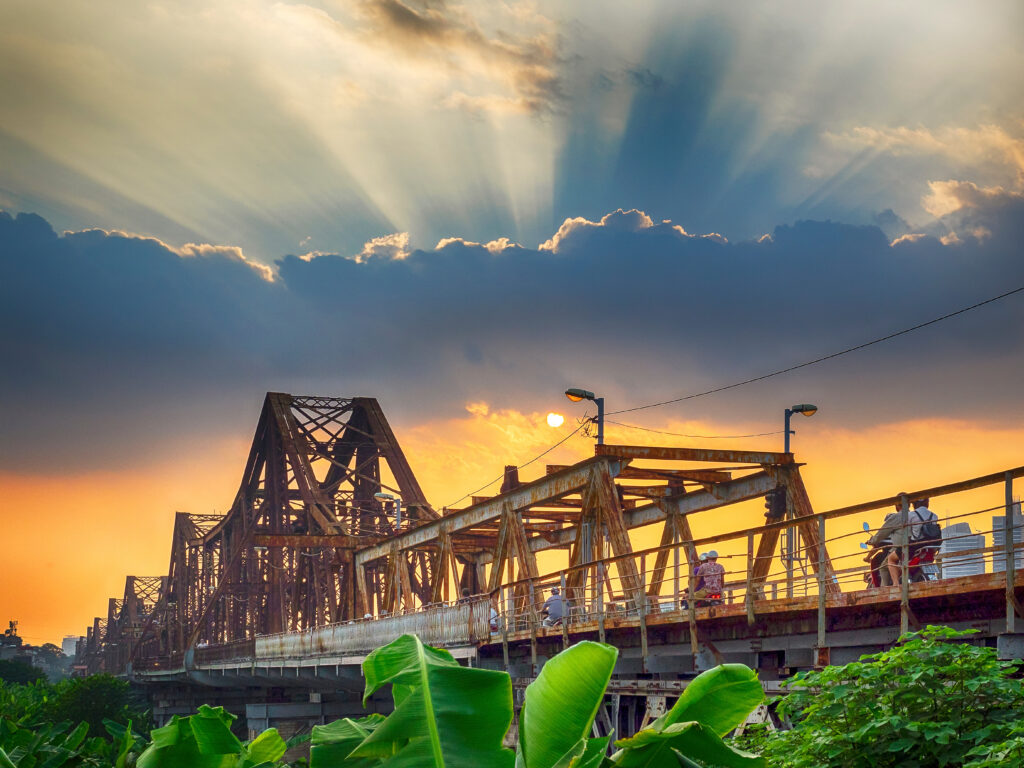
Inaugurated in 1902, the Long Bièn Bridge is a symbol of unity, endurance and patriotism for the Vietnamese people. According to Paul Doumer, it is "the most remarkable work ever executed in the Far East". For others, it's known as the "dragon that rides the Red River". Bombed 14 times by American aircraft, it was refurbished each time, which explains why only six of the original 19 arches remain.
Worth knowing: if you'd like to opt for a personalized travel itinerary in Vietnam, we recommend you request your free quote right here. A tailor-made, responsible trip, direct with the best local agencies, awaits you!
8. President Hô Chi Minh's mausoleum

Inaugurated on August 29, 1975, the Mausoleum of President Hô Chi Minh stands on the very spot where Hô Chi Minh proclaimed Vietnam's independence in August 1945. The mausoleum was built with materials from all regions of Vietnam, and its lotus-shaped architecture is inspired by local traditions. The Party decided to artificially preserve Hô Chi Minh's body and place it in this mausoleum. An honor guard watches over the mausoleum day and night, and Ho Chi Minh's remains are never left alone, guarded by soldiers 24 hours a day. Each year, the mausoleum is closed between the first week of September and the first week of December to ensure the body is properly preserved.
Here are a few points to bear in mind when visiting the mausoleum: all your belongings, including cameras, are kept at the entrance, as photography is forbidden. You must be decently dressed (no hats, shorts, tank tops, etc.) and walk in silence without stopping. At the exit, you'll find yourself in the park and will see Hô Chi Minh's residence, a house on stilts.
9. The Vietnam Museum of Ethnography, Vietnam's most beautiful museum

Without a doubt, this is the most beautiful and interesting museum in Vietnam. Designed in collaboration with the Musée de l'Homme in Paris, the Musée d'ethnographie du Viêt Nam was inaugurated by President Jacques Chirac at the Francophonie Summit in November 1997. Over an area of 4.5 hectares, the museum highlights the traditions of the 54 ethnic groups that make up Vietnam . It also houses a research center, several libraries and warehouses for the various collection items. Water puppet theater performances and activities for children are regularly organized here.
Worth knowing: all explanatory charts and legends are presented in three languages: Vietnamese, French and English. Allow a good half-day to fully explore this vast museum.
10. Ngoc Son Temple, a small, colorful and peaceful temple
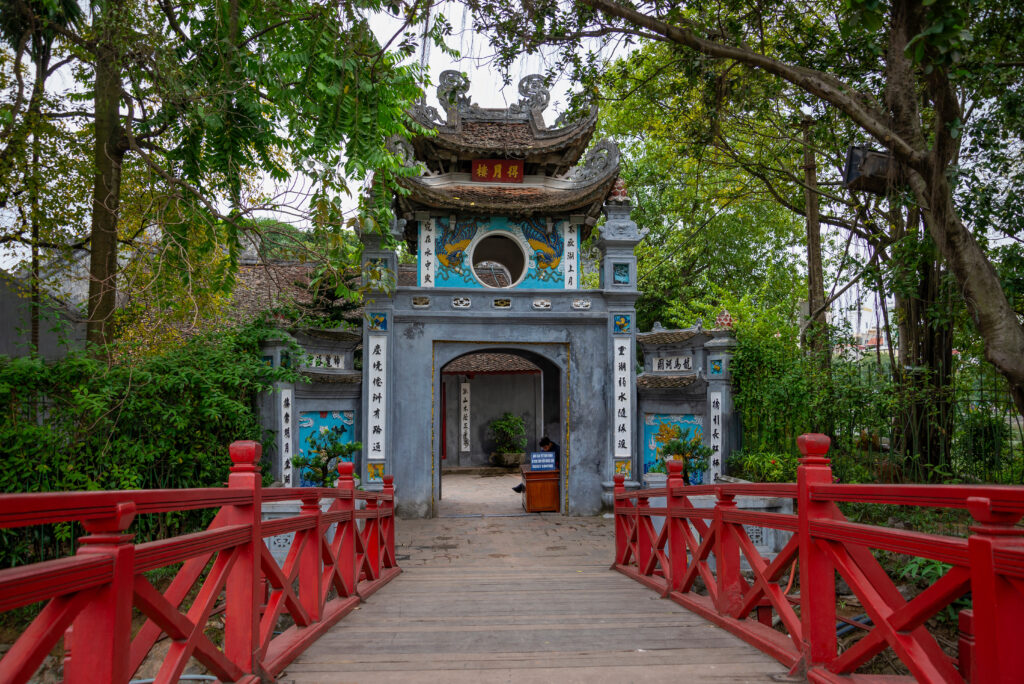
Situated in the middle of Lake Hoàn Kiêm, Ngoc Son Temple is a small, colorful temple dedicated to General Trân Hung Dao, the 13th-century victor over the Mongols, which is reached by a pretty red bridge. The place is restful, peaceful and pleasant, and well worth a visit! Don't miss a stroll through its splendid garden. Since 2019, the temple has housed the embalmed body of the sacred turtle of Hoan Kiêm Lake, who died in 2016.
Looking for other quiet, less touristy spots? Discover Hanoi's hidden treasures by booking this guided tour to discover the city's secrets and legends.
See also Hanoi, the thousand-year-old capital
11. What to do in Hanoi Visit the Quan Thanh temple
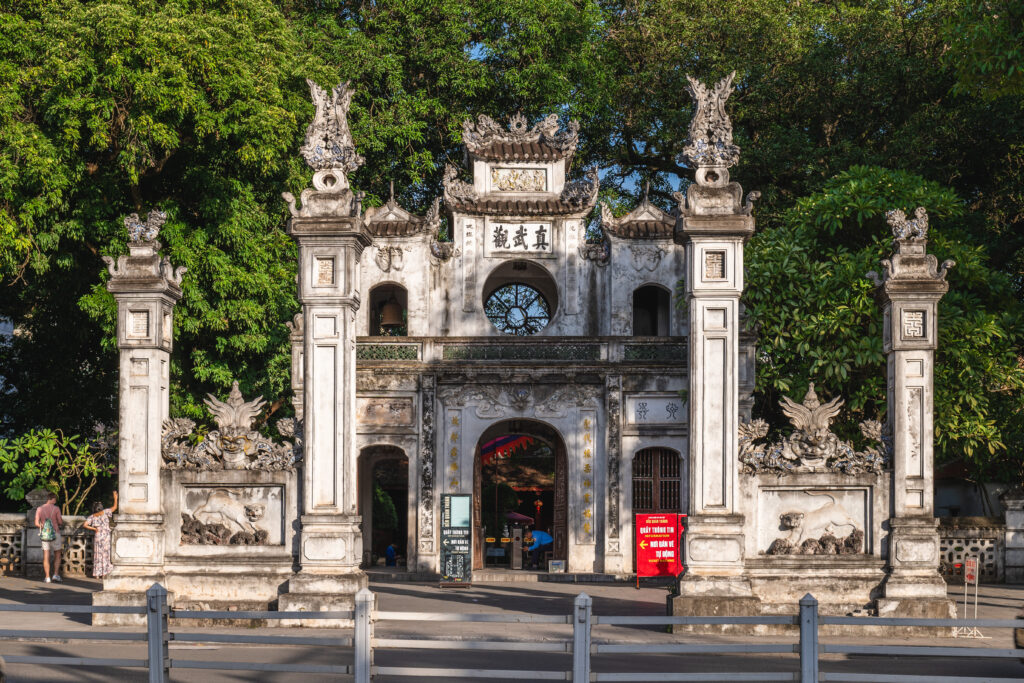
Built during the reign of Emperor Ly Thai Tô in the early 11th century (1010-1028), the Quan Thanh temple honored Huyên Thiên Trân Vu, the "warrior in charge of the Guard of the Dark Sky", responsible for defending the northern part of the royal citadel against demons and evil spirits. The temple has been restored several times, most recently as part of Hanoi's millennium preparations in 2010. Some of the stone steles date back to the 17th century, while the courtyard layout dates back to the 19th century. In the late afternoon, martial arts classes are sometimes held here. The temple is particularly popular with the capital's residents during festivals, notably Têt, the Vietnamese New Year.
Read more: How to visit Vietnam? Our tips
12. Admire the sunset from the Tran Quoc pagoda

Located on the shores of West Lake, Tran Quoc Pagoda is Hanoi's oldest pagoda and well worth a visit. It's one of our favorite places in Hanoi. Although far from the city center, it's well worth the detour, especially at nightfall when the pagoda is even more beautiful. We recommendgoing there at sunset to enjoy a superb view of the lake and watch the Vietnamese come to take photos. It's well worth the effort.
Did you know? Vietnam is one of the world' s top destinations for romantic vacations!
13. White Silk Lake and its flamboyant trees
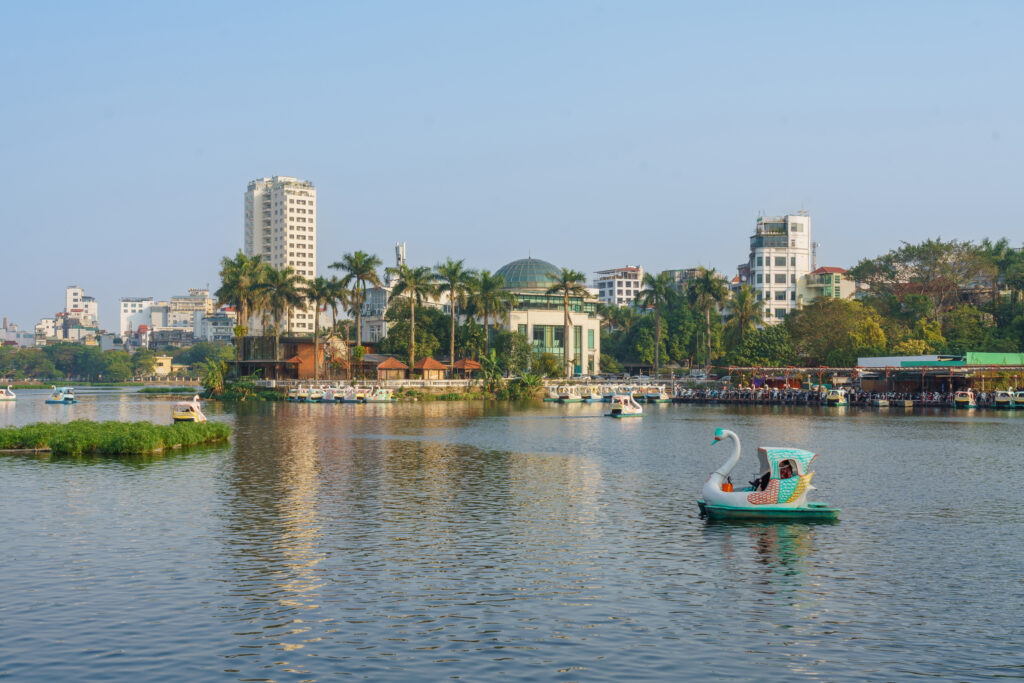
Separated from Lac de l'Ouest by the Cô Ngu dike, Lac de la Soie Blanche is lined with flamboyant trees whose red flowers color the banks in blood-red hues. It takes its name from the abandoned concubines who used to stay here and weave white silk. The Thanh Niên dike, which separates the two lakes, is also known as the Road of Love. It's a superb spot, especially at sunset when the colors are magnificent. We suggest you sit down for a drink and admire the lake: a real treat fora stay in Vietnam in November, for example.
14. West Lake, the city's largest lake
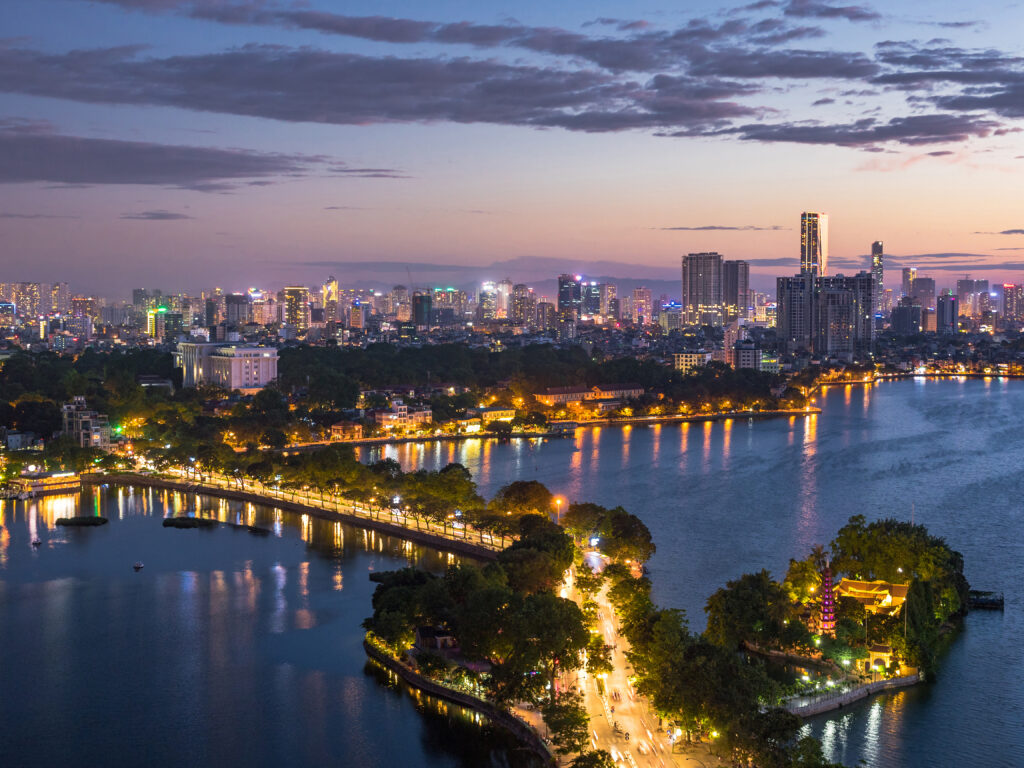
Lac de l'Ouest is the capital's largest lake, covering some 500 hectares. Formerly known by various names such as "Lac de la Dépouille du Renard", "Lac aux Vagues d'Argent", "Lac des Brumes" and "Lac de l'Ouest", this lake is surrounded by several legends. According to one of them, an angry dragon unleashed the waters of Heaven and Earth to drown the evil genius of the 9-tailed fox. Although a little out of town, it offers magnificent views and a peaceful setting. You'll come across fishermen on the lakeshore and many Vietnamese couples strolling along.
Petit Futé tip: A dawn bike ride around the lake is ideal for early risers, as a mysterious aura emanates when the lake is completely covered in mist.
15. The Museum of Vietnamese Military History, one of the country's seven most visited national museums
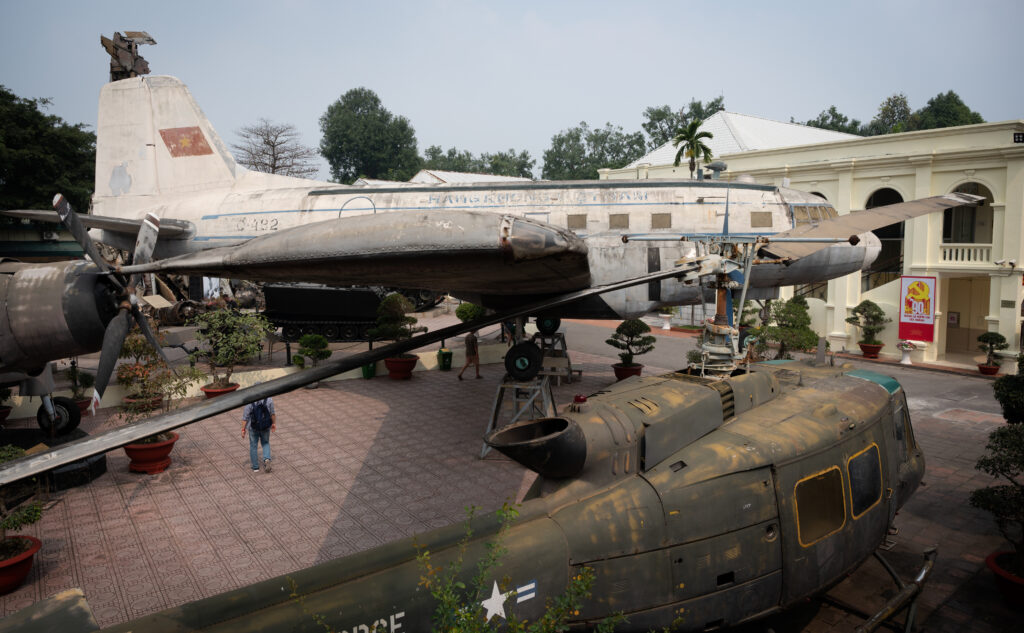
Located opposite the Lenin statue, the Museum of Vietnamese Military History is one of the seven most visited national museums in Vietnam. Opened in 1959 as the "Army Museum", it presents the main armed conflicts that have marked the country's history. Uniforms, pennants and military equipment are on display, as are re-enactments of famous battles such as the siege of Diên Biên Phu and the capture of Saigon. More than 2,000 documents and objects offer visitors a comprehensive overview of Vietnam's military history, from the period of the Hung kings to that of Ho Chi Minh. The museum also showcases the fighting methods and homemade weapons used in the struggle against foreign invaders. On the first floor, to the rear, is a temporary exhibition hall.
Good to know: Leaving the museum, you can continue to the right to the Flag Tower (Ky Dai), built in 1805 and used by the French as an observation point and military communications station, today a symbolic monument integrated into the Army Museum.
16. What to do in Hanoi Go to the Quan Su pagoda

Built in the 15th century by the Lê dynasty, the Quan Su pagoda once served as a guest house for ambassadors from Buddhist countries and important congregation leaders. Frequently restored over the centuries, since 1934 it has housed the headquarters of the Buddhist Sangha of Vietnam. During the first half of the 7th lunar month, when the souls of the dead return to haunt the world of the living, the Quan Su pagoda attracts thousands of visitors, not only from Hanoi but also from the surrounding provinces.
17. Taste typical Vietnamese culinary specialties
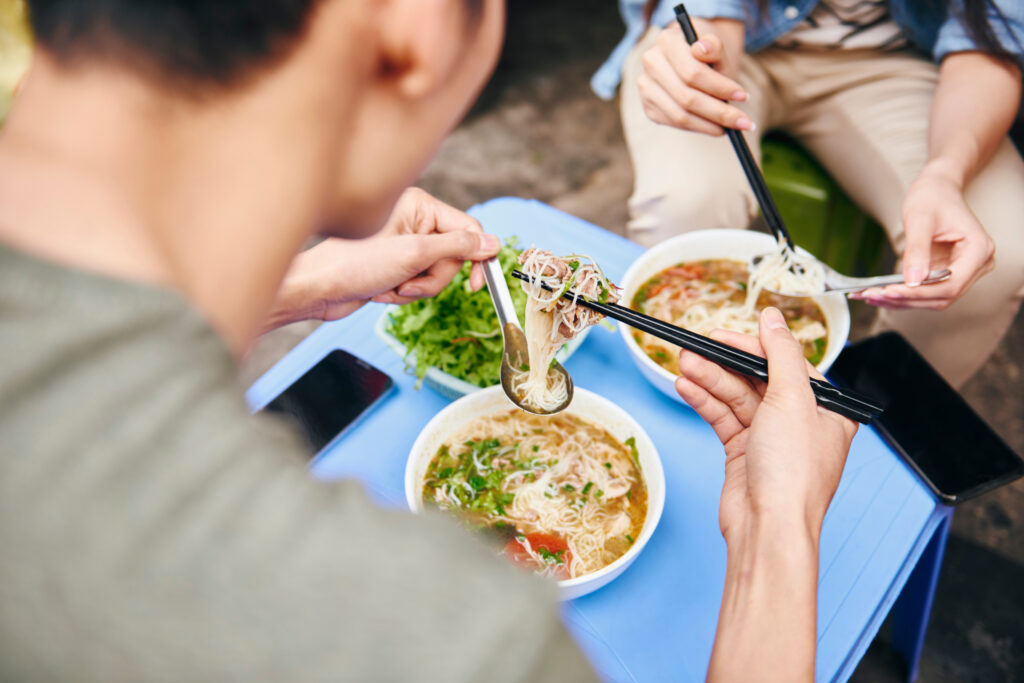
During your stay in Hanoi, be sure to sample the local culinary specialties, in particular the famous pho. This soup, whose reputation has spread around the world, is a veritable emblem of Vietnamese gastronomy. Prepared with a tasty beef or chicken broth, rice noodles, aromatic herbs and various garnishes such as bean sprouts. Don't miss bun cha either, grilled pork dumplings served with rice noodles and a savory sauce, or banh mi, a Vietnamese sandwich topped with meats, pickled vegetables and spicy sauces.
To reserve: Sample some of the locals' favorite everyday dishes ona walking tour of Hanoi, which you can book right here.
A little anecdote: during your stay in Vietnam, you cantry one of the world's most unusual culinary specialties: snake! The flesh is served as a soup, while the blood, venom and bile are served in small glasses. A digestive?
Did you know? Vietnam is one of the world 's best vegetarian destinations!
Where to stay in Hanoi?
Choosing the best area to stay in Hanoi depends on your preferences and what you want to do during your stay.
Hoan Kiem (Old Quarter)
- Advantages: This is the historical and cultural heart of Hanoi, with numerous tourist sites, markets, restaurants and stores. Ideal for those who want to be at the center of the action.
- Disadvantages: Can be noisy and crowded, especially in the evenings and on weekends.
Tay Ho (West Lake) district
- Pros: Located around West Lake, this neighborhood is more residential and offers a peaceful atmosphere. Ideal for families and those seeking a little peace and quiet.
- Disadvantages: A little out of the city center, requiring longer journeys to visit the main tourist sites.
Dong Da district
- Advantages: Close to the university and many student cafés and restaurants. Good compromise between entertainment and tranquility.
- Disadvantages: Fewer tourist attractions in the immediate vicinity.
For a first visit, the Old Quarter (Hoan Kiem) is often recommended for its centrality and lively atmosphere. However, if you prefer a quieter, more residential environment, the Tay Ho district is an excellent option. For those looking for a good compromise between liveliness and tranquility, the Dong Da district may be ideal.
Discover our three favorite accommodations in Hanoi:
- The most romantic: the Sofitel Legend Métropole Hanoi
Bookable herethis emblematic luxury hotel has been an institution since 1901. Combining colonial heritage with neo-classical luxury and a touch of modernity, it has an elegance and romantic ambience you're unlikely to find anywhere else. A pure experience of refined living to be had in Vietnam!
- Travelers' favorite: Hanoi La Selva Hotel
Regularly rewarded for the quality of its rooms and services, this hotel has earned an excellent reputation. It is often fully booked, especially as it offers very affordable rates. However, there's nothing to stop you trying your luck by booking here and take advantage of the hotel's remarkable comfort and ideal location, just a 2-minute walk from Lake Hoàn Kiêm.
- The quietest: De Syloia Hotel
Conveniently located in the heart of downtown, close to Hoàn Kiêm Lake, yet away from the hustle and bustle , this hotel, bookable right here, is built around a French-era villa. It boasts beautiful rooms with a warm, intimate atmosphere. A discreet, classic, central and quality address. And the adjoining restaurant serves excellent Vietnamese cuisine!
How do I get to Halong Bay from Hanoi?
There are several options for getting to Halong Bay from Hanoi:
- By car: If you have your own vehicle, the journey will take around 3 hours.
- By bus: Buses run frequently from one of Hanoi's bus stations, such as My Dinh Station. The journey takes around 3 hours and 30 minutes and costs around 220,000 VND.
- By train: The Halong Express is a slower option, requiring 7 hours to get from Hanoi to Halong, but offering magnificent scenery. The cost is around 100,000 VND.
- With an agency: This is the easiest and most convenient option , but also the most expensive. The agency will take you by shuttle bus to Halong Bay and accompany you on the tour. The most popular option for visiting Halong Bay is certainly the 24-hour tour, starting at the port around noon and finishing at the same time the following day, which you can book right here.
To find out more, read our article dedicated to Halong Bay in Vietnam: the practical guide to visiting it.
What to see in Hanoi in 3 days
Hanoi, the vibrant capital of Vietnam, offers a multitude of sites to explore. Here's a suggested itinerary to discover the city's must-sees in three days:
Day 1: Discovering the historical and cultural heart
- Morning:
- Old Quarter (Hoan Kiem): Start your day with a stroll through the Old Quarter, with its lively streets and traditional markets. Don't miss Hoan Kiem Lake and Ngoc Son Temple.
- Temple of Literature: Visit this temple dedicated to Confucius, a landmark in Vietnam's educational history.
- Afternoon:
- Hô Chi Minh Mausoleum: Head to the Ba Dinh complex to visit Hô Chi Minh's mausoleum and learn more about the country's modern history.
- One Pillar Pagoda: Located nearby, this pagoda is famous for its unique architecture.
- Evening
- Water Puppet Theater: Attend a traditional water puppet show, a unique cultural experience.
Day 2: Exploration of cultural and historical sites
- Morning:
- Museum of Vietnamese Ethnology: Discover the country's cultural diversity through exhibitions on Vietnam's 54 ethnic groups.
- Hoa Lo Prison (Hanoi Hilton): Visit this former prison to learn more about Vietnam's colonial history and wars.
- Afternoon:
- Quan Su Temple: Explore this historic Buddhist temple, home to the headquarters of the Buddhist Sangha of Vietnam.
- Cathédrale Saint-Joseph: Admire this neo-Gothic cathedral, a testimony to French influence in Hanoi.
- Evening:
- Dong Xuan night market: Shop and sample local dishes in this lively market.
Day 3: Relax and explore the surrounding area
- Morning:
- Tran Quoc Pagoda: Located on the shores of Lac de l'Ouest, this pagoda is one of Hanoi's oldest and offers a magnificent view.
- Lac de l'Ouest (Ho Tay): Enjoy a walk or bike ride around this vast lake, ideal for relaxing.
- Afternoon:
- Vietnamese Women's Museum: Discover the roles and contributions of women in Vietnamese history and culture.
- Tay Ho district: Explore this residential area and relax in one of the many lakeside cafés.
- Evening:
- Dinner in a local restaurant: End your stay with dinner in one of Hanoi's many restaurants, where you can sample typical culinary specialties such as pho or bun cha.
This itinerary will allow you to discover Hanoi's main historical, cultural and natural sites, while enjoying the city's culinary richness and unique atmosphere.
Discover also the most popular things to do in Hanoi:
So, are you tempted? Take a look at our airfares and book now !


